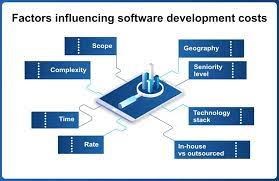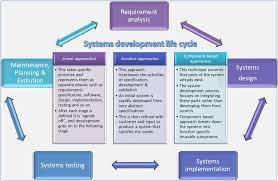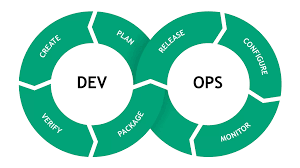Unlocking the Potential of Distributed Software Development: A Modern Approach to Collaborative Coding
The Advantages of Distributed Software Development
In today’s interconnected world, distributed software development has become a common practice among many organizations. This approach involves teams collaborating on a project from different locations, often across countries or continents. While traditional in-house development has its benefits, distributed software development offers several advantages that can lead to increased efficiency and productivity.
Global Talent Pool
One of the key advantages of distributed software development is access to a global talent pool. Organizations can tap into a diverse range of skills and expertise from around the world, allowing them to build high-performing teams with specialized knowledge in various technologies and domains.
Around-the-Clock Development
With team members located in different time zones, distributed software development enables organizations to have round-the-clock development cycles. This means that work can progress continuously as one team hands off tasks to another at the end of their workday, leading to faster project completion.
Cost Savings
By leveraging distributed teams, organizations can realize cost savings in terms of overhead expenses. They can hire talent from regions with lower labor costs without compromising on quality, resulting in significant cost efficiencies compared to maintaining an in-house team.
Enhanced Collaboration Tools
To facilitate effective communication and collaboration among distributed teams, organizations invest in advanced tools and technologies. These tools include project management platforms, video conferencing software, version control systems, and messaging applications that enable seamless coordination and information sharing.
Flexibility and Scalability
Distributed software development offers organizations the flexibility to scale their teams up or down based on project requirements. They can quickly onboard additional resources when needed and adapt to changing demands without being constrained by geographical limitations.
Conclusion
As technology continues to advance, distributed software development is likely to become even more prevalent in the future. By embracing this approach, organizations can harness the benefits of global collaboration, cost savings, enhanced productivity, and flexibility in adapting to evolving market dynamics.
Key Insights into Distributed Software Development: FAQs and Best Practices
- What is distributed software development?
- How does distributed software development differ from traditional in-house development?
- What are the benefits of distributed software development?
- What challenges are associated with distributed software development?
- How do teams ensure effective communication in distributed software development?
- What tools and technologies are commonly used in distributed software development?
- How can organizations successfully manage and coordinate distributed teams in software development projects?
What is distributed software development?
Distributed software development refers to a collaborative approach where teams work on a software project from different locations, often geographically dispersed. This method allows organizations to leverage a global talent pool, access specialized expertise, and facilitate around-the-clock development cycles. By breaking down barriers of physical distance, distributed software development enables seamless collaboration through advanced tools and technologies. This approach offers cost efficiencies, flexibility in team scalability, and enhanced productivity, making it a popular choice for modern organizations looking to optimize their software development processes.
How does distributed software development differ from traditional in-house development?
In distributed software development, teams collaborate on a project from different locations, often across countries or continents, utilizing a global talent pool and advanced collaboration tools to work together effectively. This approach differs from traditional in-house development, where all team members are typically located in the same physical workspace. Distributed development allows for around-the-clock work cycles, cost savings through leveraging diverse labor markets, and increased scalability by easily adding or reducing team members based on project needs. While traditional in-house development fosters face-to-face interactions, distributed software development prioritizes virtual communication and coordination to achieve efficient and productive outcomes despite geographical barriers.
What are the benefits of distributed software development?
When considering the benefits of distributed software development, organizations can leverage a global talent pool, access specialized expertise from around the world, and foster innovation through diverse perspectives. Additionally, the around-the-clock development cycles enabled by teams in different time zones can lead to faster project completion and increased productivity. Cost savings are another significant advantage, as organizations can tap into regions with lower labor costs without compromising on quality. Enhanced collaboration tools and flexibility in scaling teams up or down based on project needs further highlight the advantages of distributed software development in today’s interconnected world.
What challenges are associated with distributed software development?
When it comes to distributed software development, several challenges are commonly encountered. One significant challenge is communication among team members who are geographically dispersed. Misunderstandings can arise due to differences in time zones, languages, and cultural norms, leading to delays and inefficiencies in project progress. Coordination and collaboration may also be hindered by the lack of face-to-face interaction, making it crucial for teams to leverage effective communication tools and establish clear channels for sharing information. Additionally, ensuring consistent code quality and adherence to project timelines across distributed teams can be challenging without proper monitoring and coordination mechanisms in place. Addressing these challenges requires a proactive approach to fostering strong team dynamics, implementing robust communication strategies, and utilizing appropriate technologies to support seamless collaboration in distributed software development projects.
How do teams ensure effective communication in distributed software development?
Effective communication is crucial in distributed software development to ensure that teams collaborate seamlessly across different locations. Teams employ various strategies to enhance communication, such as regular video conferences, daily stand-up meetings, and utilizing collaboration tools like project management platforms and messaging applications. Establishing clear channels for sharing updates, progress reports, and feedback helps team members stay informed and aligned on project goals. Additionally, setting expectations for response times and establishing protocols for resolving issues promptly contribute to maintaining effective communication in distributed software development environments.
What tools and technologies are commonly used in distributed software development?
In distributed software development, various tools and technologies play a crucial role in facilitating effective collaboration among remote teams. Commonly used tools include project management platforms like Jira and Trello for task tracking and assignment, version control systems such as Git for code management and collaboration, communication tools like Slack and Microsoft Teams for real-time messaging and video conferencing, and cloud computing services such as AWS and Azure for hosting applications and data storage. Additionally, continuous integration and deployment tools like Jenkins and Docker are utilized to automate the build, test, and deployment processes across distributed teams. These technologies enable seamless coordination, communication, and productivity in distributed software development environments.
How can organizations successfully manage and coordinate distributed teams in software development projects?
Successfully managing and coordinating distributed teams in software development projects requires a strategic approach that prioritizes effective communication, collaboration, and project management. Organizations can implement several key practices to ensure the success of their distributed teams. This includes establishing clear goals and expectations, leveraging advanced collaboration tools and technologies, defining roles and responsibilities within the team, fostering a culture of transparency and trust, scheduling regular meetings and check-ins to keep everyone aligned, and providing opportunities for team building and social interactions despite physical distance. By investing in these practices and promoting a culture of teamwork and shared responsibility, organizations can overcome the challenges of distance and time zones to deliver successful software development projects through their distributed teams.












